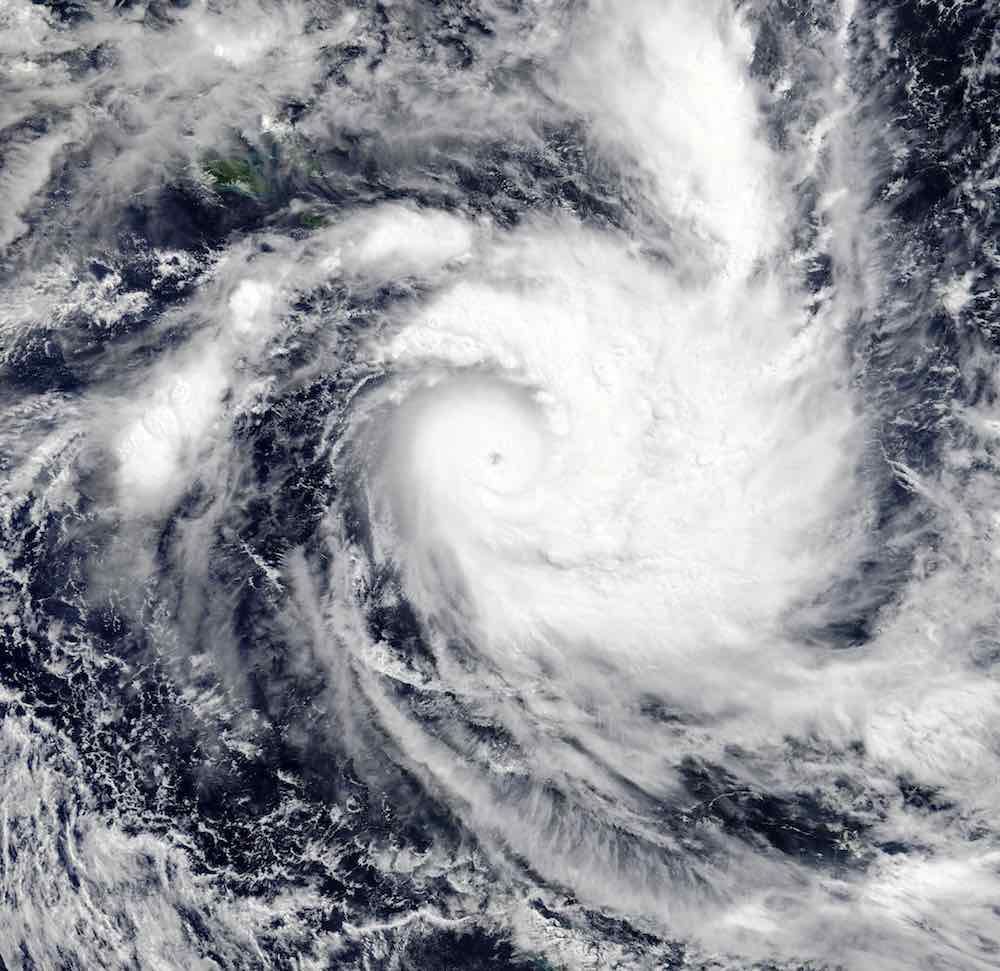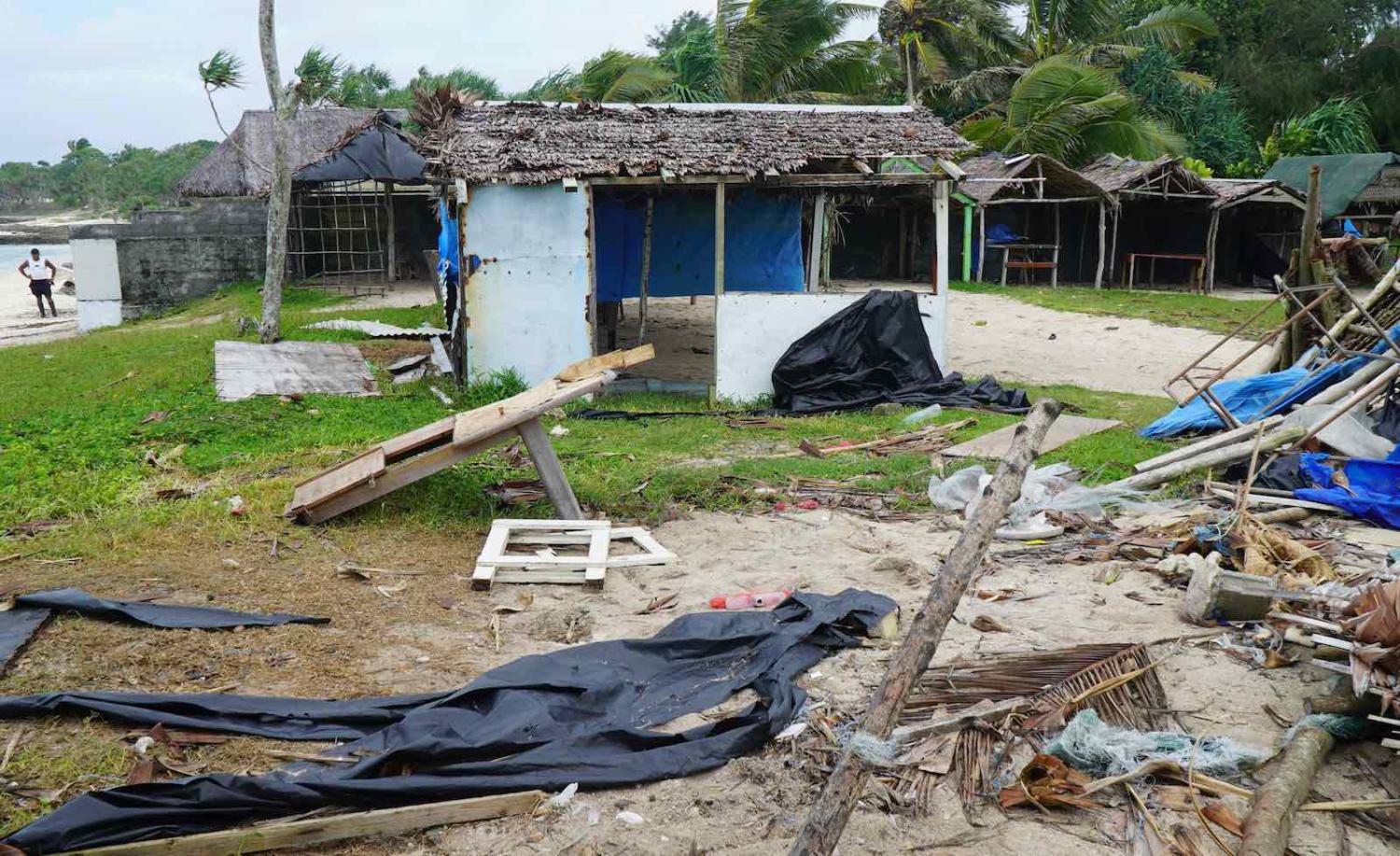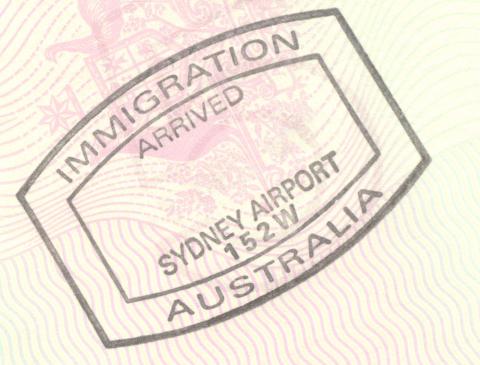Wind speeds over 215 kilometres per hour, more than 180,000 people affected, communities and their infrastructure hit hard, and countries in lockdown – Cyclone Harold is the most recent climate-fuelled calamity to wreak havoc in the Pacific islands. Combined with the Covid-19 pandemic, this recovery will be one of the most challenging for the region.
It is not the first, nor will it be the last, of these devastating Category 5 cyclones. The difference this time is that external humanitarian “saviours” will be scarce on the ground, but perhaps the current situation will create a space for more locally driven and flexible responses.
The Intergovernmental Panel on Climate Change predicts that once-in-a-century hazards may become annual events by 2050.
The Secretary General of the Pacific Islands Forum, Dame Meg Taylor, acknowledged the devastation, but also the possibilities to reshape disaster relief operations, stating that “the pandemic offers an opportunity to consider climate-smart response and recovery measures”. Following every major environmental disaster, performance assessments have highlighted the need for better coordination, stronger local engagement, and “building back better”. Now is a good time to deliver on those ambitions and elevate the role and recognition of local systems.
In the 2019 IPCC Report the Intergovernmental Panel on Climate Change predicted that once-in-a-century hazards may become annual events by 2050. The human, economic, and social costs of future events will be high and pressure on community responses elevated. It has been estimated, for example, that the impact of Fiji’s 2015 Tropical Cyclone Winston will be felt until 2025, with a substantial hit to its economy – one fifth of its 2014 GDP.
The risk to communities will be even greater following Cyclone Harold if local networks and assets are not better leveraged. Post-disaster assessments have highlighted that after immediate humanitarian needs are addressed, efforts must be geared first toward vulnerable people, then focus on shelter, livelihoods, and infrastructure. Priorities are place-dependent – but if no one asks local people, no one knows.
Unfortunately, these questions are not always posed. Humanitarian assistance often ends up being supply-driven rather than demand-driven. During Cyclones Winston and Pam, a notable proportion of aid went to waste because it did not meet local needs and, more concerning, overwhelmed supply chains and deliveries of needed goods. Basic aid did not reach several communities simply because lack of visibility or legal recognition existed in the formal system. Consequently, densely populated peri-urban settlements suffered.
Most Pacific island countries now take a sector-based approach to disaster response, which in many cases leads to siloed interventions. Those in charge of shelter delivery do not always speak productively to those providing water, health care, or protection services. As the UN gender adviser Aleta Miller noted following Cyclone Winston, “a lack of coordination between the wide range of actors involved in responses can cause even more harm … if you want to go fast, go alone, but if you want to go far, go together”.
In response, area-based approaches (ABAs) have been developed and widely adopted by the humanitarian aid community for more effective post-disaster recovery. As the name suggests, the idea is to focus on specific locations, and within them provide coordinated, cross-sectoral responses, such as linking water aid with shelter and food production aid.

Following Cyclone Pam in Vanuatu in 2015, a summary of lessons learned highlighted the need to ensure connectivity between national and community responses. Of note was the need for key information to be delivered via trusted communication channels, such as radio stations, churches and traditional leaders. In addition, the report called for a tighter fit between National Disaster Management Offices (NDMOs) and local emergency operation centres, along with more thorough consultations with vulnerable and marginalised groups.
Recently, the Pacific Islands Forum announced their commitment to a Pacific Humanitarian Pathway on Covid-19. Details are scant, but presumably such a pathway will be collaborative and inclusive. Working from the top down in the Pacific is difficult given the limited reach of many national and regional agencies. The ABAs, championed in other parts of the world as effective for their post-disaster recovery, might be just what is required with their ground up approach to engage communities and local leadership. Robert Dodds, Pacific Regional Shelter Manager at International Federation of Red Cross (IFRC) explains, “we need to engage with local communities and local government first and foremost. It’s about them being in the driving seat”.
ABAs have strong appeal in the Pacific islands and are becoming the preferred approach for leading actors, including the United Nations High Commissioner for Refugees (UNHCR) and the Global Shelter Cluster (GSC). However, they will only work if implementing organisations take the time to forge local partnerships and prioritise genuine needs.
From the field, we know that ABAs are difficult to enact, slow to deliver, and involve rounds of negotiations between invested parties. They do not fit the project management tools and modes of operation most often used by aid organisations, and they need adaptive delivery approaches that do not always suit agencies’ short timeframes. Yet, when done well, they respond to pressing needs and enable those on the ground to lead, which is vital to sustainable outcomes, especially in these unprecedented times that risk becoming “the new normal”.


